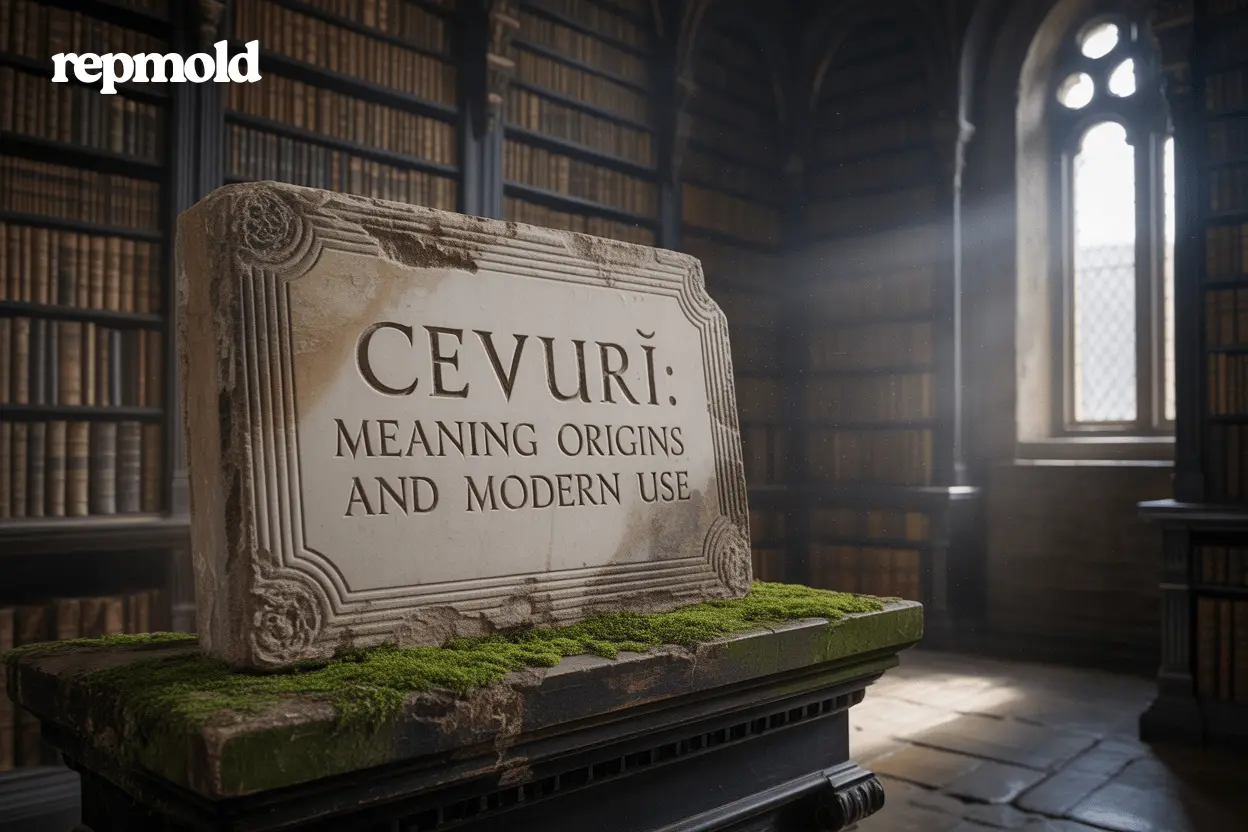Introduction
Some words feel ordinary, while others spark instant curiosity. Cevurı is one of those mysterious words that makes people stop and wonder. It does not appear in common dictionaries, yet it carries a weight of meaning across different contexts.
Cevurı is often linked to history, culture, and even translation. In some spaces, it represents traditions and rituals. In others, it connects to modern digital slang or linguistic quirks. This makes it a word that bridges both the past and the present.
Today, Cevurı remains relevant because it symbolizes continuity and adaptation. It reminds us that language is alive, always shifting, and always carrying pieces of human history. From ancient practices to online communities, Cevurı adapts and evolves.
In this article, you will learn the deeper meaning of Cevurı, its cultural and historical origins, and how it continues to influence modern life. You will also see its applications in education, art, communication, and digital culture. Most importantly, you will discover why preserving and understanding Cevurı matters for the future.
What Is Cevurı?
Cevurı, pronounced cheh-VOO-ree, is more than just an unusual word. At its core, it reflects history, culture, and evolving communication. Unlike ordinary terms, its meaning shifts depending on where and how it is used.
In cultural contexts, Cevurı is linked to traditions, rituals, and heritage. It often symbolizes practices that connect communities across generations. In translation and language studies, it resembles the Turkish word çeviri, which means “translation.” This shows its tie to communication and cross-cultural understanding. Yet, in modern internet slang, Cevurı has taken on playful, ironic, or even meme-like qualities.
Therefore, Cevurı is not fixed to one idea. Instead, it adapts to different situations, bridging history and modern life. This flexibility makes it more than a word. It becomes a symbol of continuity, creativity, and shared human experience.
The Origins of Cevurı
The origins of Cevurı are both fascinating and layered. Its story begins with deep cultural and historical roots. Many believe it was once tied to traditions, ceremonies, and local customs that defined community life. Over centuries, it became a symbol of shared values and preserved heritage.
Cevurı often appears in references to rituals and artifacts. These connections highlight its role in shaping cultural narratives. In some regions, it represented beliefs, while in others, it reflected daily practices. Such variety shows how flexible its meaning has always been.
Linguistically, scholars suggest a link to the Turkish word çeviri, meaning “translation.” This connection explains why Cevurı is often viewed as a bridge between languages and cultures. Over time, however, its identity evolved. Today, it blends heritage with modern uses, proving that language adapts while preserving its roots.
Cevurı in Historical and Cultural Context
Cevurı has long been tied to cultural identity and shared memory. In earlier times, it often appeared in ceremonies that marked important life events. Communities used it as a way to honor traditions and pass values forward.
In literature, Cevurı symbolized wisdom, belief, or connection with heritage. Writers and storytellers mentioned it to capture the spirit of their people. This preserved its meaning across generations, even as languages evolved.
Artifacts also show traces of Cevurı. Objects from ancient practices reveal its use in rituals, crafts, and celebrations. These examples highlight how deeply it was woven into daily life.
As time moved on, its presence became a link between past and present. Today, remembering Cevurı allows cultures to celebrate continuity while embracing modern interpretations. It proves that heritage survives through language and tradition.
Modern Uses of Cevurı
Cevurı may have historic roots, yet it thrives in today’s world. In education, it works as a tool to teach history, culture, and language. Students learn how traditions shape society and how words preserve heritage. Teachers also use it to explain cultural diversity and identity.
In the arts, Cevurı inspires creative expression. Artists blend traditional elements with modern styles, creating works that honor the past while speaking to the present. This fusion keeps traditions alive while sparking new forms of creativity.
In digital culture, Cevurı appears in memes, internet slang, and online discussions. It sometimes represents playful mistranslation or cultural humor. This flexible use shows how language adapts to modern platforms.
Finally, in communication, Cevurı bridges gaps between people and ideas. It connects different backgrounds, encourages dialogue, and fosters global understanding in a world that values inclusivity
Benefits of Understanding Cevurı
Understanding Cevurı offers many meaningful benefits for individuals and communities. First, it deepens cultural appreciation. By learning about it, people gain respect for traditions and shared history. This awareness fosters pride and connection within communities.
Second, Cevurı helps preserve heritage for future generations. Documenting its history and meaning ensures that valuable customs are not forgotten. Passing it forward keeps traditions alive in a modern world.
Third, it strengthens global connections and inclusivity. Cevurı encourages dialogue across cultures, creating bridges that reduce barriers and misunderstandings. It reminds us that language can unite rather than divide.
Finally, it offers creative and academic insights. Scholars explore its historical roots, while artists use it as inspiration. This dual value enriches both research and creative expression, proving that Cevurı remains relevant beyond its origins.
Challenges and Preservation
Cevurı faces real challenges in today’s fast-changing world. One major risk is the fading of its cultural meanings. As modern trends dominate, older traditions often lose their relevance. In some cases, the word may even be misused, stripping it of its original value.
Therefore, documentation and education become essential. Recording its history and teaching it in schools help protect its true meaning. Public awareness also plays a vital role in keeping people connected to its roots.
At the same time, many efforts aim to keep its legacy alive. Cultural events, art projects, and academic studies highlight its significance. By blending tradition with modern platforms, societies ensure that Cevurı remains visible and respected.
Preserving it is not just about history. It is about protecting identity and ensuring future generations can appreciate its worth.
Why Cevurı Matters Today
Cevurı matters today because it acts as a bridge between tradition and modernity. It links cultural roots with contemporary life, showing that heritage can adapt to change. Through this balance, it proves that the past still shapes the present.
It is also a reminder of how language and culture constantly evolve. Words shift, meanings expand, and traditions gain new forms. Cevurı reflects this natural process, reminding us that culture is never static. Instead, it grows with each generation.
Finally, Cevurı represents both history and digital transformation. While rooted in rituals and heritage, it now appears in online spaces and modern communication. This dual presence highlights its unique role—preserving history while embracing innovation.
In today’s world, Cevurı shows that culture survives best when it evolves with time.
Conclusion
Cevurı is more than a word. It carries meaning, history, and cultural depth. From its ancient roots to its modern relevance, it reflects continuity between tradition and change. It shows how language adapts yet still protects heritage.
Therefore, valuing and preserving Cevurı is essential. By studying it, teaching it, and celebrating it, we ensure cultural expressions are not lost. Each effort keeps history alive while strengthening our connection to the present.
Ultimately, Cevurı stands as a timeless link between past, present, and future. It reminds us that words can hold stories, traditions, and evolving identities. By embracing Cevurı, we embrace continuity, creativity, and shared human experience. Its legacy proves that culture survives when people choose to protect and honor it.

